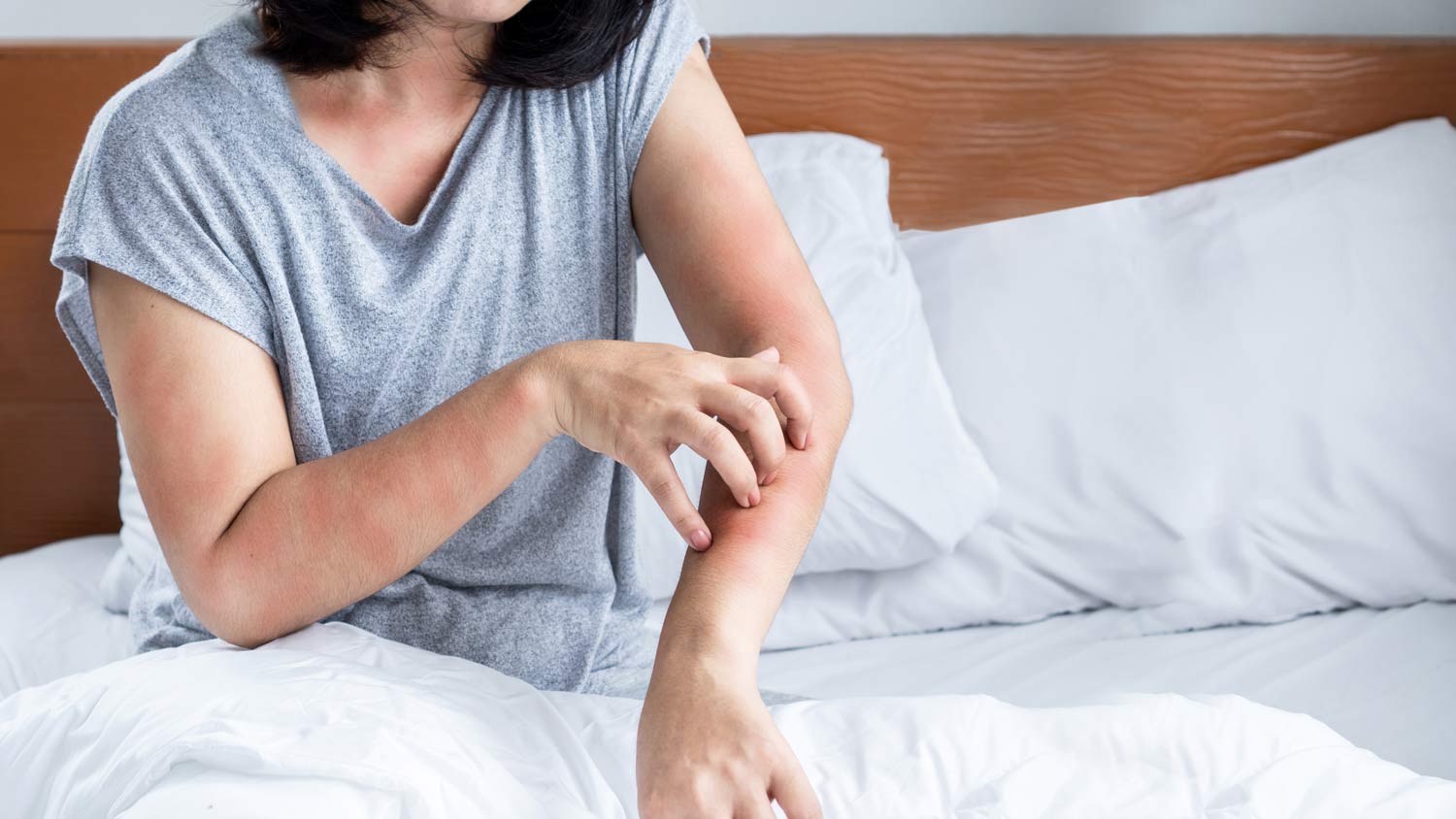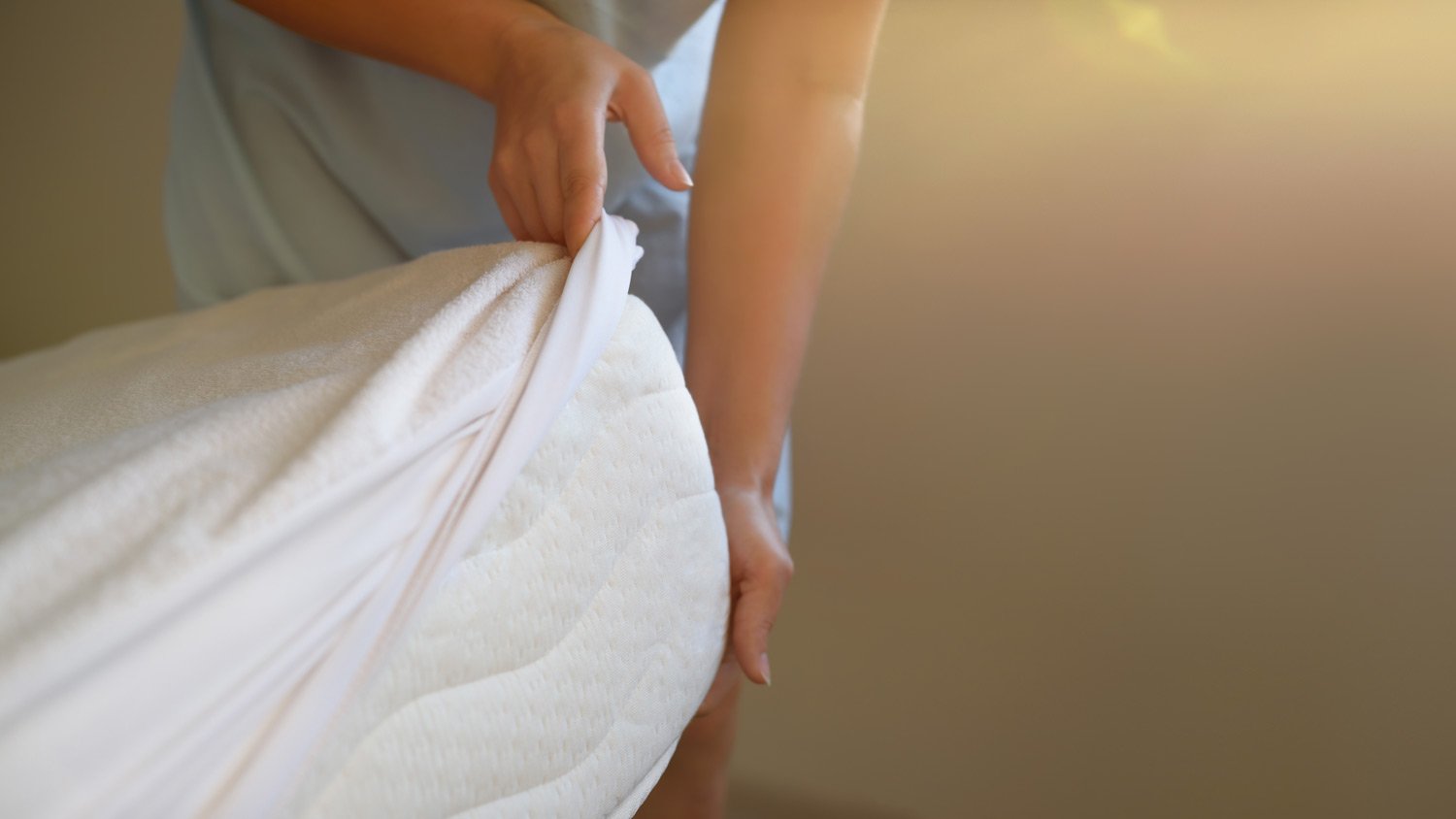
The average roach exterminator cost is between $100 and $600, depending on the species, infestation severity, and home size. Read on for a cost breakdown.
These tiny bugs can be a major problem


Mites are tiny bugs that belong to the tick and spider family.
Indoor mites burrow in bedding and other house linens.
Washing linens with hot water can help get rid of mites.
Regular mopping and vacuuming can also eliminate mites.
Your local exterminator can treat mite infestations and prevent future ones.
Whether they’re triggering your allergies or burrowing under your skin (yes, really), mites are tiny pests with big potential to bug you. These nearly invisible arthropods thrive in places you don’t want to think about. Here’s a closer look at mites and how to get rid of them.

A member of the tick and spider family, mites are microscopic bugs with bloodsucking habits that can become a nuisance if you have an unknown infestation. They can be found in a wide variety of environments, from soil and water to plants, animals, and even inside the home. Although not all mites bite, the ones that do leave behind red, itchy bumps and rashes that can irritate the skin and possibly lead to an infection.
While many mites are harmless or even beneficial, others can cause serious irritation, allergic reactions, or skin conditions in humans and animals. Understanding the different types of mites is key to identifying infestations, managing symptoms, and taking appropriate action.
Mold mites love to eat mold and other fungi. If you have a mold infestation in a damp area of your home, it will likely attract these unwanted mites. Since they are so small and practically clear, it's nearly impossible to see an individual mold mite with the naked eye.
A common species of mites, clover mites feed on grasses and clover (hence the name) and are not blood feeders, so they don’t leave behind bite marks. If spotted, they can be seen inside near windows and windowsills and leave behind a red residue if crushed.
These translucent species live in mattresses, pillows, bedding, upholstered furniture, carpet, and curtains. Although they don’t cause bites, they can leave behind droppings and body fragments that are major indoor allergens. The best way to reduce or remove them is to regularly wash bed linens and clean floors and furniture often.
As their name suggests, bird mites feast on the blood of birds and are most active at night. They are most often found in attics, eaves, gutters, and chimneys, and can make their way inside the home through vents or gaps.
Chigger mites can be found in heavily wooded areas and pastures with tall grass and weeds. Their larvae feed on the blood of animals and people, but adult chiggers are harmless. They thrive in warm and humid climates.
Mite signs depend largely on what type of mite is taking up space in your home—or on your skin.
Red, itchy bites that appear in clusters on the arms, neck, and face
Swollen or blistered skin
A pimple-like rash
Sneezing, coughing, or wheezing unexplainably
The best way to determine if your bites are from mites is to visit your local dermatologist or have an exterminator perform an inspection to see if you have an infestation.

Indoor mites like to burrow in bedding, drapes, and carpeting. That’s why the best way to get rid of mites is to clean your sheets, curtains, and other linens in hot water. This will effectively kill any live mites living in your linens.
Other tasks you can complete to show mites the boot include:
Wet mopping floors
Vacuuming rugs and carpet
Deploying a dehumidifier in infested spaces
Applying insecticide around the outside of your home
Hiring a local exterminator
From average costs to expert advice, get all the answers you need to get your job done.

The average roach exterminator cost is between $100 and $600, depending on the species, infestation severity, and home size. Read on for a cost breakdown.

Whether you have bugs, bats, or rodents invading your home, you’ll want to contact an exterminator quickly. Find out how much pest control costs in Columbus, OH.

Discover the average ant exterminator cost, factors impacting pricing, and how to save. Get expert tips to budget for ant removal and protect your home.

Tired of birds taking over your space, creating noise, and leaving messy droppings? Learn how to keep birds off your porch with this simple guide.

Learn how to keep badgers away in a safe and humane way. They’re cute, but you don’t want them taking up residence in your home and garden.

Are roaming deer enjoying the fruits of your labor before you get the chance to? Discover how to keep deer out of your garden with these effective deterrents.